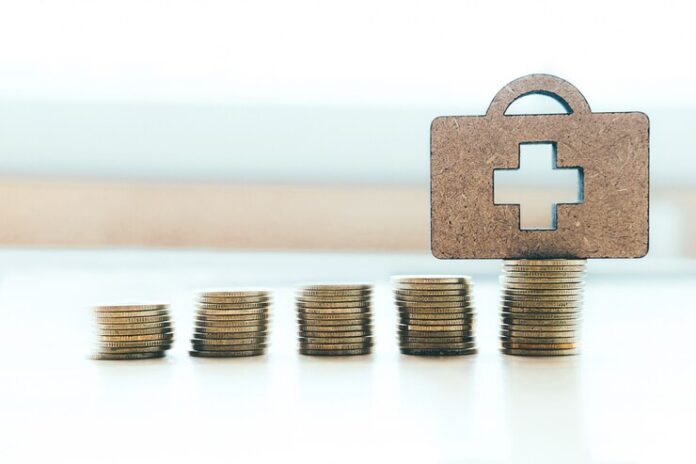In an unpredictable world, health emergencies can strike at any moment, often leaving us unprepared both physically and financially. Whether it’s an unexpected trip to the emergency room, a sudden illness, or an accident, the medical costs associated with these emergencies can be overwhelming. This is where having an emergency medical fund becomes essential. In this article, we’ll explore what an emergency medical fund is, why it’s crucial, and how to create one effectively.
What is an Emergency Medical Fund?
An emergency medical fund is a dedicated savings account set aside specifically to cover unexpected medical expenses. This fund can help you manage costs not covered by insurance, such as deductibles, co-pays, and out-of-network services. It provides a financial buffer that can ease the stress of dealing with medical emergencies, allowing you to focus on recovery rather than finances.
Key Characteristics of an Emergency Medical Fund:
- Accessible: The funds should be readily accessible in case of an emergency. This means it should be kept in a savings account or another liquid asset where you can easily withdraw it.
- Separate from Other Savings: Keep this fund separate from your regular savings or emergency fund. This ensures that the money is specifically allocated for medical emergencies.
- Flexible Amount: The size of your fund can vary based on your individual health needs, insurance coverage, and personal financial situation.
Why is an Emergency Medical Fund Essential?
- Rising Healthcare Costs
Healthcare costs have been rising steadily over the past few decades. According to a report from the Kaiser Family Foundation, the average annual premium for employer-sponsored family health coverage was over $22,000 in 2021, with employees contributing more than $5,000 toward that cost. Even with insurance, out-of-pocket expenses can accumulate quickly. An emergency medical fund helps you cover these unexpected costs without derailing your finances.
- Unexpected Medical Events
Medical emergencies can happen at any time, often without warning. Car accidents, sudden illnesses, or unexpected surgeries can lead to significant expenses. Having a dedicated fund means you’re better prepared to handle these situations without needing to rely on credit cards or loans, which can lead to long-term debt.
- Peace of Mind
Financial stress can significantly impact your health and overall well-being. Knowing that you have a financial safety net for medical emergencies can alleviate anxiety and allow you to focus on what truly matters—your health and recovery. This peace of mind can lead to better health outcomes, as you’re more likely to seek medical attention when necessary rather than avoiding it due to financial concerns.
- Avoiding Debt
Using credit cards or loans to cover medical expenses can lead to high-interest debt that can take years to pay off. According to a study by the Consumer Financial Protection Bureau, medical debt is a significant contributor to personal bankruptcy. By having an emergency medical fund, you can avoid the cycle of debt and maintain better control over your finances.
- Flexibility for Health Choices
When you have an emergency medical fund, you have more flexibility in your healthcare choices. You can seek the best treatment options without the constant worry of how to pay for them. This can include choosing a specialist or considering alternative treatments that may not be covered by your insurance.
How to Create an Emergency Medical Fund
- Set a Savings Goal
Start by determining how much you need in your emergency medical fund. A common recommendation is to aim for three to six months’ worth of medical expenses. Consider your insurance deductibles, typical co-pays, and any recurring medical costs (like prescription medications or ongoing treatments).
- Choose the Right Account
Select a savings account that offers easy access to your funds without penalties. Look for an account with minimal fees and competitive interest rates. Some people choose high-yield savings accounts or money market accounts to earn a little interest while keeping their funds accessible.
- Automate Your Savings
One of the easiest ways to build your emergency medical fund is by setting up automatic transfers from your checking account to your savings account. Even small, regular contributions can add up over time. Consider scheduling these transfers right after you receive your paycheck to ensure you prioritize your savings.
- Adjust as Necessary
Your healthcare needs may change over time, so it’s essential to regularly reassess your emergency medical fund. If your health situation changes or you have new family members, adjust your savings goals accordingly. Keeping an eye on your fund will help ensure you are always prepared for any medical emergencies.
- Utilize Windfalls
If you receive unexpected money—like a bonus at work, a tax refund, or an inheritance—consider allocating a portion of that windfall to your emergency medical fund. This can help you reach your savings goal faster and provide additional security.
Conclusion
An emergency medical fund is a crucial component of a comprehensive financial plan. It provides a safety net that can help you navigate the often-overwhelming costs associated with unexpected medical events. With rising healthcare costs, increasing incidences of medical emergencies, and the need for peace of mind, establishing a dedicated savings fund is more important than ever.
By taking proactive steps to build this fund, you can ensure that you and your loved ones are better prepared for whatever health challenges may arise. Remember, investing in your health and financial security is one of the best decisions you can make for your future. In a world where uncertainties abound, having an emergency medical fund can be the difference between financial stability and overwhelming stress. Start today, and secure a healthier, more financially secure tomorrow.

